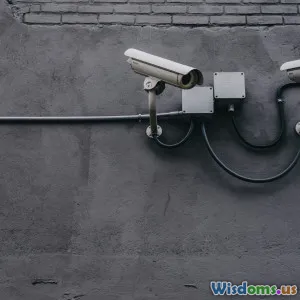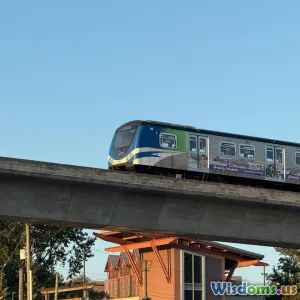
Case Study Thwarting Video Conferencing Lag in Corporations
8 min read Explore how corporations effectively reduce video conferencing lag through innovative strategies and real-world solutions. (0 Reviews)
Thwarting Video Conferencing Lag in Corporations: A Comprehensive Case Study
Introduction
In an era where remote work and hybrid teams have become the norm rather than exceptions, video conferencing stands as the backbone of corporate communication. Stakeholders rely on digital meetings to brainstorm, negotiate, train, and support operations across continents. Yet, one common nemesis consistently disrupts the flow: video conferencing lag. This seemingly innocuous delay or jitter not only saps productivity but also fragments team connection, causing miscommunications and frustration.
Consider the scenario faced by GlobalTech Solutions, a multinational corporation with over 15,000 employees spread across 23 countries. Frequent multinational video calls were integral to their operations but plagued by persistent lag—audio out of sync, frozen video, and times when collaboration came to a halt entirely. This case study delves into how GlobalTech identified the root causes of video conferencing lag, implemented solutions, and ultimately restored the seamless interaction needed for modern corporate success.
Understanding Video Conferencing Lag: Causes and Impacts
What is Video Conferencing Lag?
Video conferencing lag refers to the delay between the transmission and reception of audio-visual data during an online meeting. It manifests as slow video feed, delayed audio, jittery frames, or sometimes abrupt disconnections. Even small lag can severely disrupt workflows.
Common Causes of Lag in Corporations
- Insufficient Bandwidth: Video streams require consistent, high-speed internet; anything less undermines data flow.
- Network Congestion: Multiple users and devices overburden networks especially during peak hours.
- Outdated Hardware: Aging routers, computers, or webcams struggle to process high-quality streams.
- Inefficient Software Handling: Applications not optimized or improperly configured create bottlenecks.
- Geographical Distance: Longer routes in data transfer induce latency.
- Security Measures: Firewalls and encryption protocols, while necessary, add overhead.
Impacts on Corporate Operations
The costs are not merely technical—employees face cognitive overload trying to compensate, meetings drag longer than needed, decision-making suffers, and client perceptions can be damaged. According to a report by Wainhouse Research, over 40% of professionals experience frequent disruptions, leading to over $200 billion lost annually in productivity worldwide.
Diagnosing the Problem at GlobalTech Solutions
GlobalTech started with a comprehensive audit of their communication infrastructure:
Data Collection
- Real-time monitoring of bandwidth usage during peak video conferencing hours.
- Surveys of employee experiences by region and department.
- Performance benchmarking between different conferencing platforms.
Key Findings
- Regional offices in APAC experienced double the lag compared to US headquarters.
- Network utilization peaked at 90% capacity during mornings and early afternoons.
- Legacy VPN tunnels were creating significant packet loss.
- Many employees used consumer-grade Wi-Fi routers and outdated laptops.
These insights highlighted that lag was not from a singular source but a compound effect.
Strategic Solutions Implemented
1. Network Infrastructure Overhaul
GlobalTech partnered with their internet service providers to upgrade bandwidth from average 100 Mbps to 1 Gbps connections in key regional centers, accommodating high-volume traffic.
2. Deployment of SD-WAN Technology
Software-defined Wide Area Network (SD-WAN) allowed dynamic routing, prioritizing video conference packets over other less critical data, reducing jitter and dropped frames.
3. Hardware Upgrades
The company issued corporate-grade laptops equipped with higher RAM and modern processors and replaced outdated routers with enterprise-level models supporting Quality of Service (QoS) features.
4. Optimized Video Conferencing Platforms
GlobalTech standardized on a platform proven with lower latency under stress, and fine-tuned the settings for bandwidth adaptation and video compression.
5. Enhanced VPN and Security Protocols
The VPN architecture was reconfigured with split tunneling, directing video conferencing data outside the slower encrypted tunnels, decreasing overhead without compromising security policies.
6. Employee Training and Support
Employees received guidelines on optimal connectivity setups: using wired connections when possible, closing unnecessary applications, and maintaining hardware regularly.
Results and Outcomes
Tangible Improvements
- Average latency dropped by 65%, with video freezes down by 80% during calls.
- Employee satisfaction ratings regarding virtual meetings rose from 52% to 88% positive.
- Meeting duration reduced on average by 15%, freeing time for other tasks.
Value to Business Continuity
Notably, during a critical product launch, global coordination via video conference was smooth, contributing directly to meeting deadlines and successful rollout.
Leadership Insights
Rajesh Narayanan, CTO of GlobalTech imparted, “Investing in end-to-end solutions proved essential. Fixing lag isn’t just IT’s job—it requires cross-department collaboration and continuous monitoring to adapt to evolving demands.”
Broader Implications for Corporations
Scalability
As remote work policies persist, corporations must consider scalable solutions that flexibly expand capacity and optimize routing.
Hybrid Work Dynamics
Balancing office and home connectivity challenges requires posture towards hybrid networking solutions and employee support.
Vendor Partnerships
Choosing providers aligned with innovation in cloud communications and infrastructure resilience becomes critical.
Data-Driven Decision Making
Regular analytics on usage patterns can anticipate stress points and guide proactive upgrades.
Conclusion
The GlobalTech Solutions case study underscores the multifaceted nature of video conferencing lag and highlights that overcoming it demands a holistic approach. Simple fixes targeting only the software or hardware aren’t enough. Corporations must merge infrastructure modernization, intelligent traffic management, employee engagement, and vigilant monitoring to achieve fluid, reliable communication channels.
In today’s accelerated business environment, where every second counts, eliminating video lag translates directly into more cohesive teamwork, enhanced creativity, and robust operational resilience. Organizations that heed this call are not only future-proofing communication but also unlocking their full collaborative potential.
By following this roadmap, companies large or small can leave behind the frustration of buffering screens and frozen faces, ushering in an era of truly connected workforces.
Rate the Post
User Reviews
Popular Posts



















